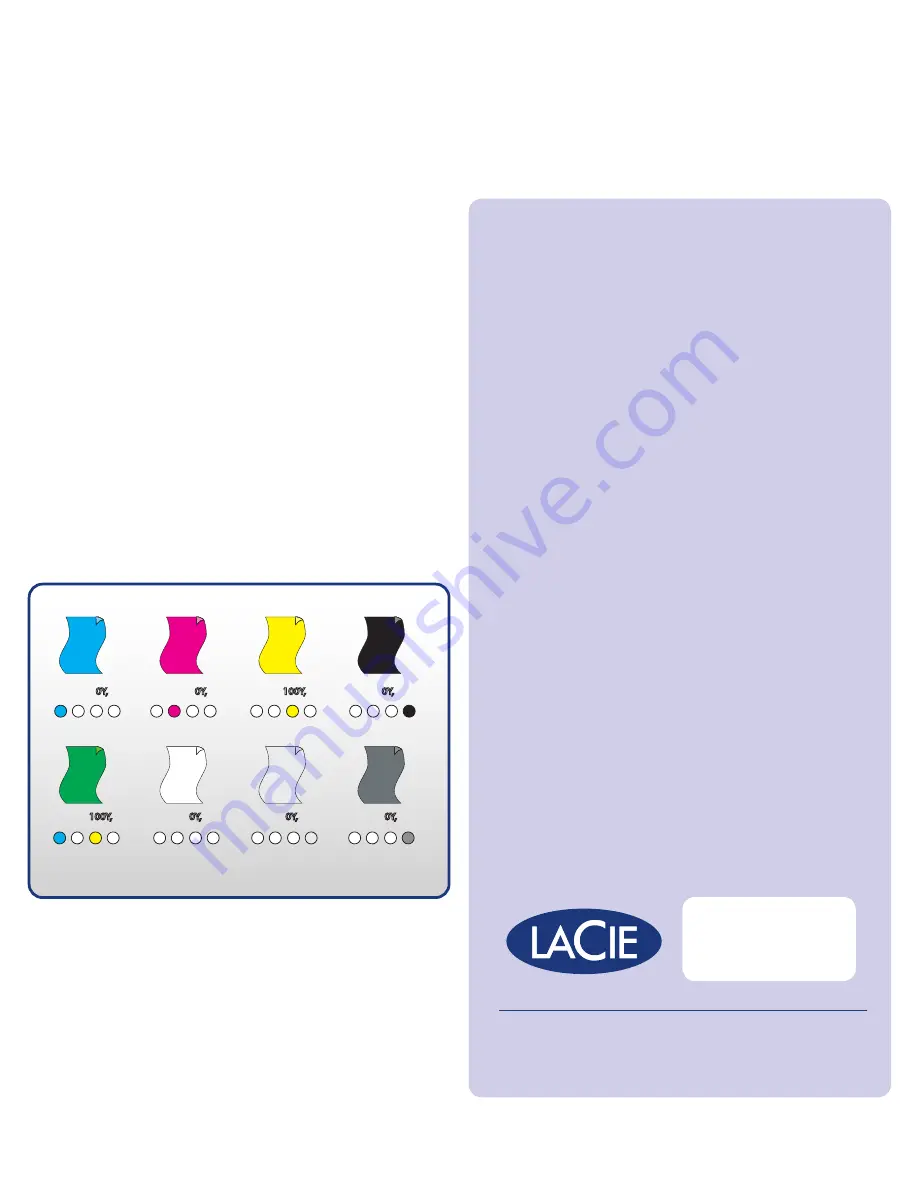
�����
�
���
����
���
���
������
����
�
��
���
�
���
������
���
����
���
�
���
�
����
�����
�
���
�����
���
���
�
���
����
���
���
�
����
���
����
���
�
����
���
����
���
������
����
�
��
���
�
���
������
���
����
���
�
���
�
����
�����
�
���
�����
���
���
�
���
����
���
���
�
����
���
����
���
�
����
���
����
�����
�
���
����
���
�����������������������������������������
The three dots are so close that at a normal distance
from the monitor, the naked eye cannot distinguish
them from one another and their colors appear
blended – added together.
PRINTERS - CMYK
Professional commercial printers, on the other hand,
produce colors by layering semi-transparent inks
over each other. The four inks most commonly used
are cyan, magenta, yellow and black
3
(abbreviated
CMYK). The range of colors that a particular printer
is capable of producing is obtained by varying the
concentration of the inks, between 0 - 100%.
As we saw in the fi rst section, the pigments present
in each of the inks will absorb certain wavelengths
from the light that strikes them and will refl ect
only certain wavelengths. The combination of
which wavelengths are absorbed by the pigments
determines the composition of the refl ected light,
and therefore the perceived color of the printed
area. This is a subtractive process.
The following illustration shows a variety of
combinations of CMYK and the resulting colors.
100, 100, 100, 0 = in theory this mix results in
black but for economical and quality reasons printer
manufacturers prefer to print black and gray colors
by using the fourth pigment –called K – rather than
the three other ones. Hence, black will more often
be printed as follows: 0, 0, 0, 100. 0, 0, 0, 0 = no
added pigments, the refl ected color is that of the
paper.
The complexity of color perception by the human
eye combined with color display on a computer and
related peripherals is the reason why an accurate
color management system is necessary.
“Through a combination of cutting-edge technological
engineering and a rich history of unique design aesthetics,
LaCie continues as a fi rm leader in the color display industry.
Established in the United States, Europe and Japan, LaCie
is a leading worldwide producer of PC and Macintosh
compatible peripherals, including a new generation of
color LCD monitors. By providing top-of-the line tools for
multimedia innovation, LaCie anticipates the needs of creative
professionals such as graphic designers, photographers and
fi lmmakers, who require genuine, practical solutions for
accurate color management.”
3. Theoretically, adding cyan, magenta and yellow at maximum concentration should produce black. For various technical, economic and practical reasons, the ‘black’ generated by mixing the primaries is not ideal; this
is why a fourth color “K” (or Black) is used in a four-color printing process in addition to the subtractive primaries.
LaCie • 22985 NW Evergreen Parkway, Hillsboro, OR 97124 USA
LaCie Group • 17 rue Ampère 91349 Massy Cedex FRANCE





















